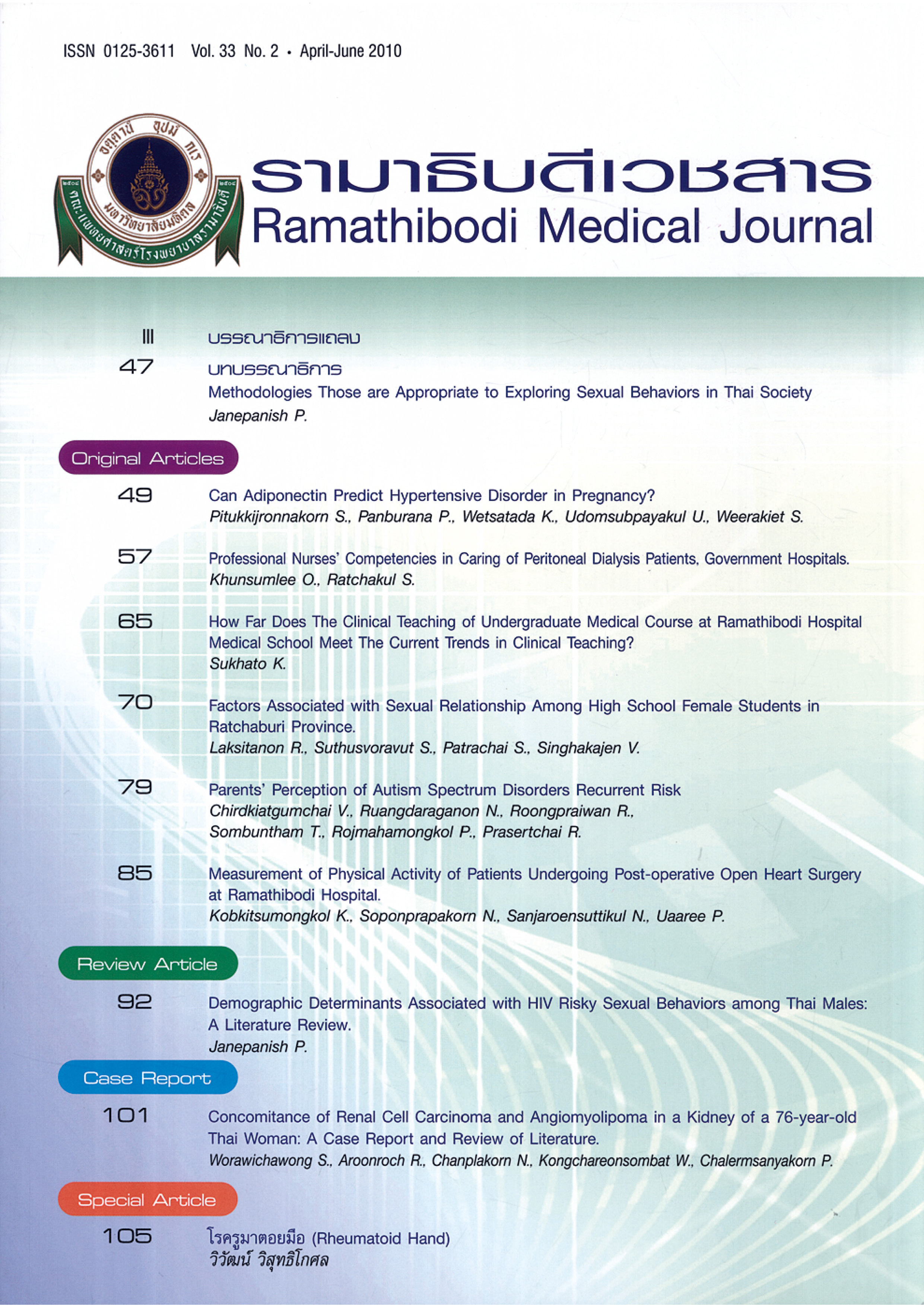How Far Does The Clinical Teaching of Undergraduate Medical Course at Ramathibodi Hospital Medical School Meet The Current Trends in Clinical Teaching
Keywords:
Clinical teaching, Undergraduate medical course, TrendAbstract
Background: The Faculty of Medicine, Ramathibodi Hospital, Mahidol University was founded in 1969. It has a traditional six-year undergraduate medical course, the first three years being devoted to basic sciences and the last three to clinical sciences. The new curriculum for the pre-clinical years introduces clinical subjects early in the course at the same time as teaching the basic sciences (vertical integration). Similarly, the new curriculum for the clinical year encourages inter-department collaboration, to create a horizontally integrated clinical course.
Objective: Although the new curriculum was developed at Ramathibodi to meet new educational ideas, gaps remain between trends in clinical teaching and existing educational practice. In this research, the current situation of clinical teaching and opinions about the some ways to improve the clinical reaching programme for undergraduate medical students at Ramathibodi Hospital from key personals were described.
Methods: In this paper an iterative qualitative method was developed and used, which consisted of focus group interviews, key informant interviews and document analysis. Participants in the research reflected the content of undergraduate medical curriculum and gave the opinions about the ways for improvement. The transcribed interviews with findings from document searches were analyzed. We under semi structured interviews of 20 key informants form a sample of medical students, who rotated in Family Medicine Elective Clerkship, and faculty staffs, who involved in organizing the new undergraduate medical curriculum, to the extent they perceived about the current clinical teaching programme in Ramathibodi Hospital. Interviews sought information about how the current clinical teaching programme in Ramathibodi meet current trends in clinical teaching and how the clinical teaching programme improve to meet the trends.
Results & Conclusion: A number of steps are needed to be undertaken on order to implement the new curriculum development introduced by the Faculty of Medical Ramathibodi Hospital, including 1) expose students to patient-centred medical care throughout the course 2) provide students with clear educational aims and objectives of the programme, to help them develop self-directed learning 3) offer a greater range of instructional methods and 4) give students the opportunity to work in multi-disciplinary/ inter- professional teams.
References
Greenlick MR. Educating physicians for the twenty-first century. Acad Med. 1995;70(3):179-85.
McLeod PJ, Harden RM. Clinical teaching strategies for physicians. Med Teach. 1985;7(2):173-89.
Salerno SM, O'Malley PG, Pangaro LN, Wheeler GA, Moores LK, Jackson JL. Faculty development seminars based on the one-minute preceptor improve feedback in the ambulatory setting. J Gen Intern Med. 2002;17(10):779-87. doi:10.1046/j.1525-1497.2002.11233.x.













